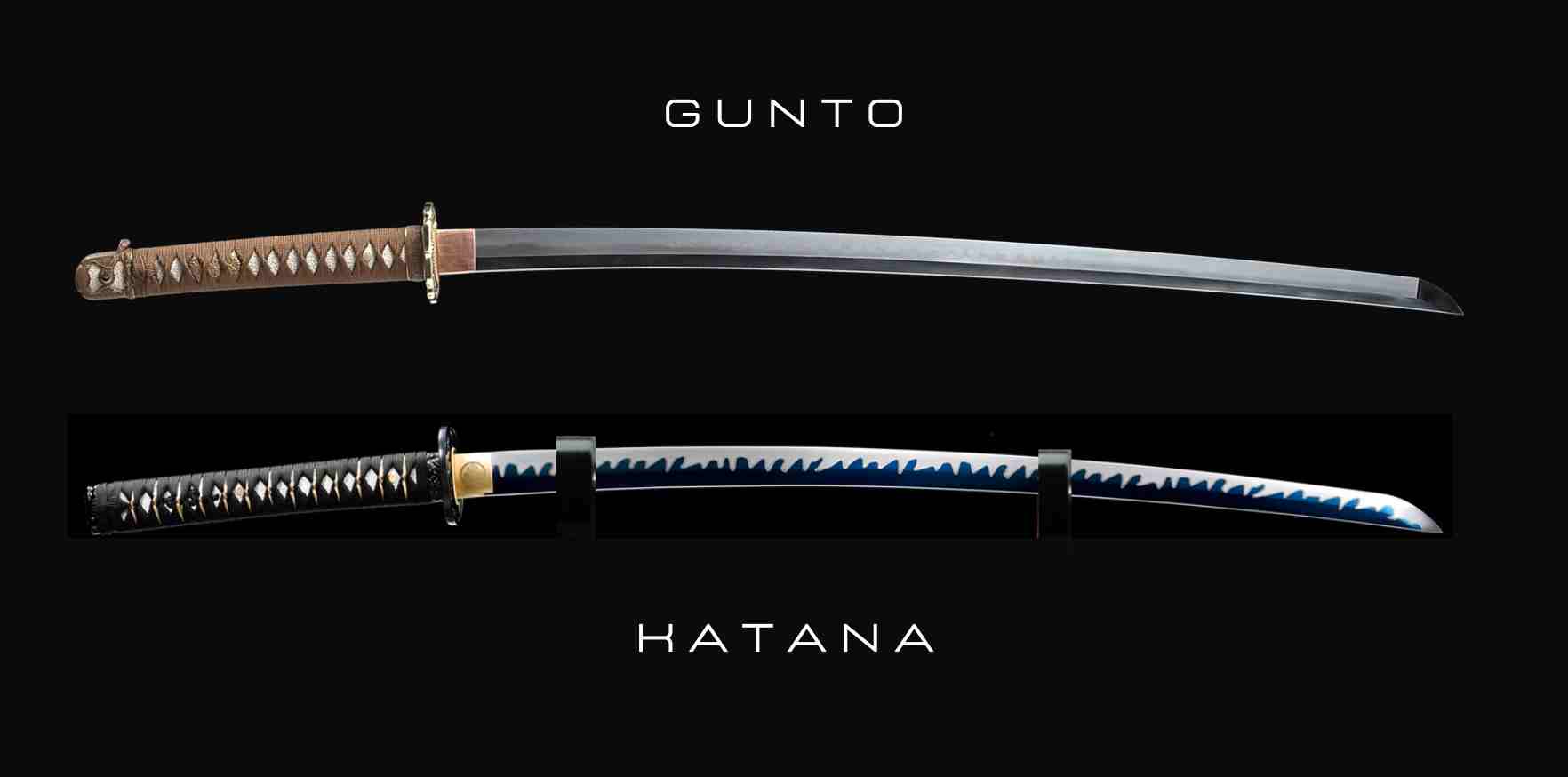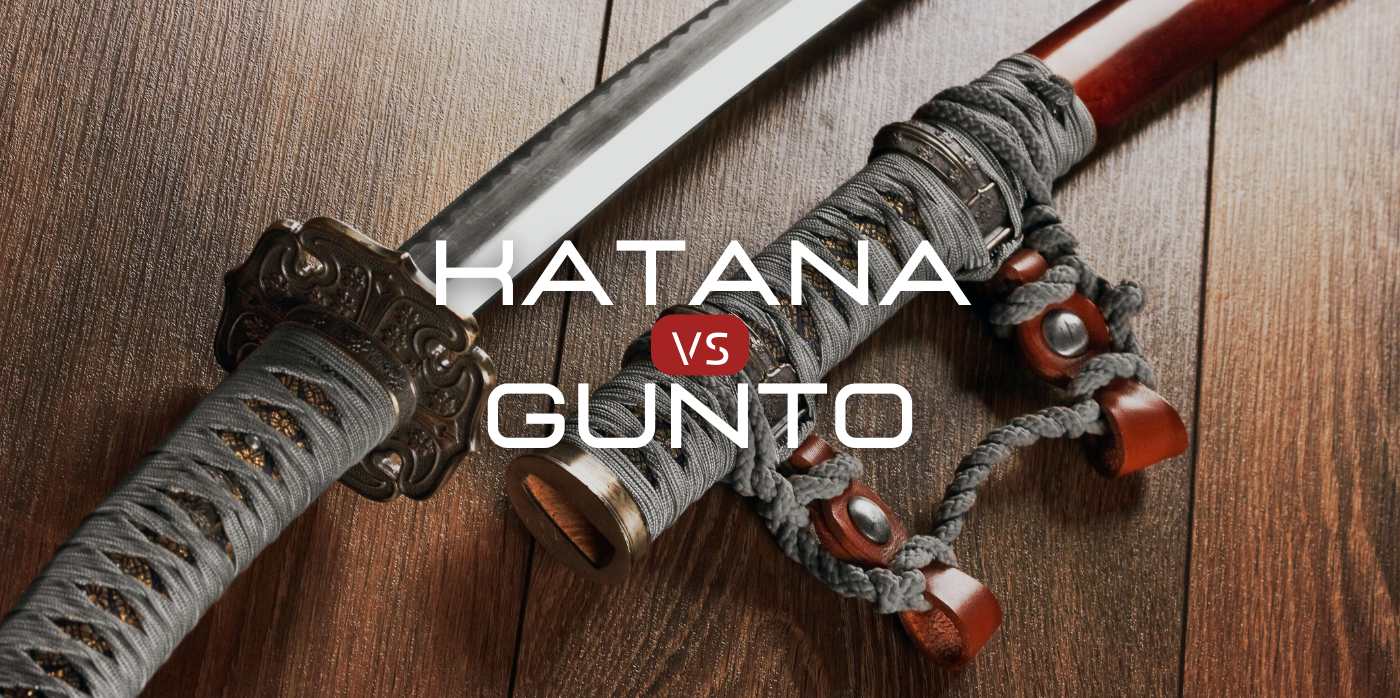The cultural and historical significance of swords in Japanese culture is profound, with the Katana and Gunto being prominent examples. The Katana, emblematic of the samurai caste and their indomitable warrior ethos, presents a stark contrast to the Gunto, a wartime blade produced en masse during World War II. In this blog post, we will traverse through the intriguing chronicles and distinct attributes of these two distinct styles of Japanese swords: the utilitarian Gunto and the iconic Katana.
1. Introduction to Gunto and Katana
Guntō (軍刀), a term which translates to "military sword" is the designation for swords produced for the Imperial Japanese army and navy during the 20th century, specifically the Showa era. Throughout World War II, these swords were produced on a huge scale and distributed to military officials.
In contrast, the Katana, which is closely linked with samurai, is a classic Japanese sword. It is distinguished by features such as a curved, narrow blade with a single sharp edge. It has a circular or squared guard and a long grip to accommodate two hands, making it a symbol of the samurai’s bravery, honor, and precision.

2. Katana Craftsmanship and Design vs Gunto
The Gunto design was heavily influenced by Western military sabers, reflecting a shift in Japanese military strategy during World War II. While traditional Japanese elements were maintained, the blade’s curvature was reduced, and some models featured a Western-style handguard.
In contrast, the Katana features a unique, distinctive design with a curved, single-edged blade, circular or squared guard, and a long grip to accommodate two hands. The Katana is made using traditional methods involving multiple folding and differential hardening to create a hard cutting edge and a flexible spine. If you'd like to own a historic piece, take a look at our gunto katana replica.
3. Katana Usage and Practicality vs Gunto
Guntos were standard-issue to Japanese military officers during World War II. They were designed for battlefield conditions, being more practical and less ceremonial than their predecessors. Guntos, however, lacked the sharpness and cutting ability of traditionally forged swords.
In contrast, Katanas were used by samurais in feudal Japan. They were versatile, used for both cutting and thrusting. The sharpness and durability of a Katana made it extremely effective in combat, while its aesthetic value lent it to ceremonial use.

4. Would a Gunto or a Katana Have the Advantage
In a hypothetical duel, the Katana, with its superior craftsmanship, balance, and sharpness, would likely outperform a Gunto sword. However, the real advantage would depend on the skill and strategy of the wielder.
5. History of the Katana vs Gunto
Guntos symbolize a period in Japanese history when the nation modernized its military and embraced influences from Western military strategies. They may lack the romanticism associated with older Japanese swords, but their historical significance is undeniable.
The Katana, however, holds a deep cultural and spiritual significance in Japan. It is revered as a work of art, embodying the samurai spirit and the Bushido code – the way of the warrior.
Summary:
- Both the Katana and Gunto are part of Japan's cultural and military history, symbolizing different eras and ideals.
- The Katana's meticulous craftsmanship contrasts with the mass production of the Gunto.
- The Katana's traditional design contrasts with the Gunto's simpler and straighter design, influenced by Western military swords.
- In terms of usage and practicality, the Katana was a weapon for close combat, while the Gunto was more symbolic during WWII, given the prevalence of firearms.
- Both the Katana and the Gunto have historical and cultural significance. However, they represent different facets of Japanese culture - the Katana symbolizes the samurai spirit and traditional craftsmanship, while the Gunto represents Japan's military history and industrial progress.
Conclusion
In conclusion, while the Gunto and the Katana hail from different eras and serve different purposes, they each contribute significantly to the complex and fascinating narrative of Japanese swords. Whether it's the practicality of the Gunto or the elegance of the Katana, these swords reveal the remarkable evolution and diversity of Japanese swordsmanship.





